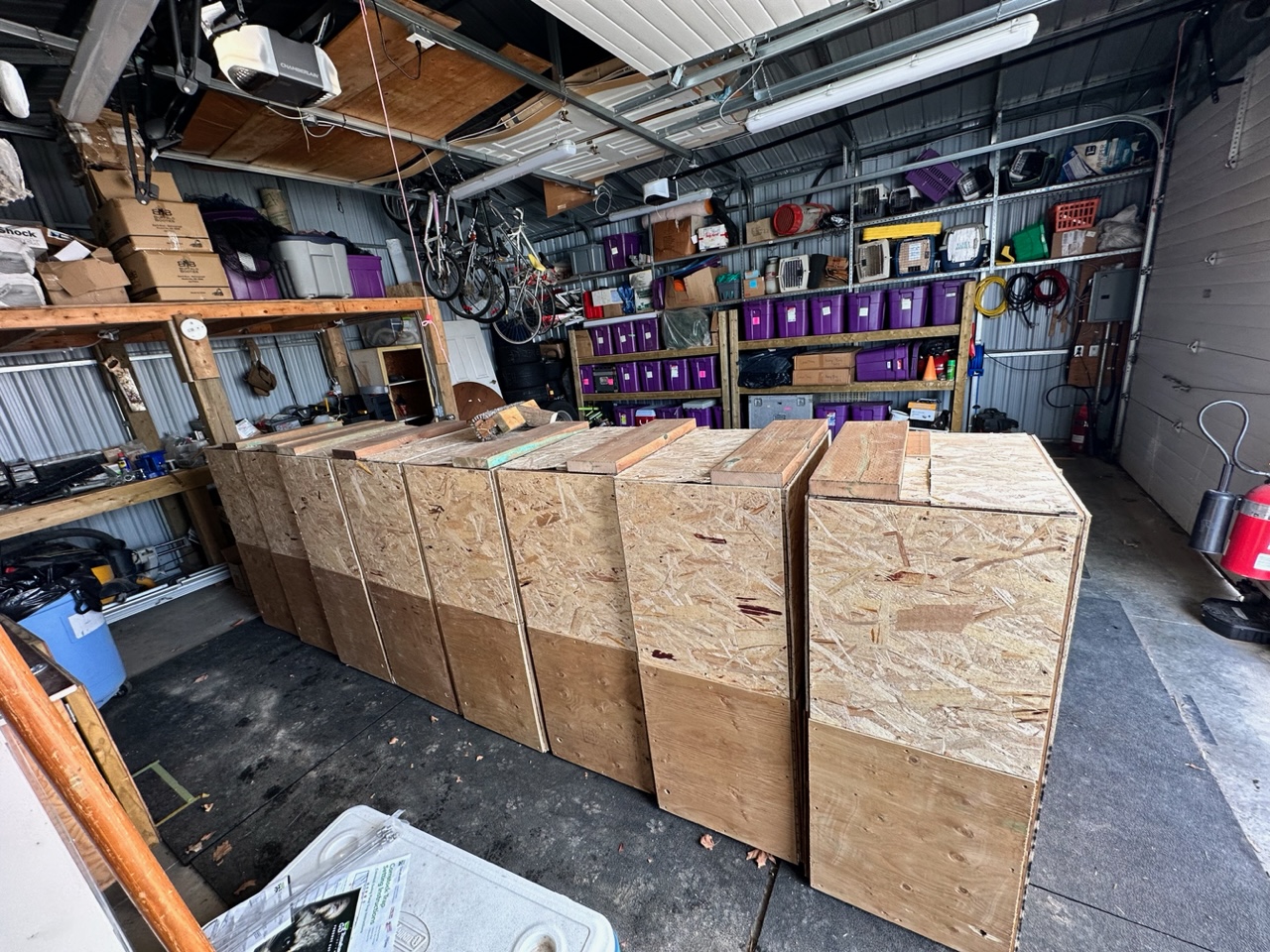
Pigeons are known to be exceptional navigators, with the ability to find their way back to their home even when released from hundreds of miles away. Despite many years of research, the exact mechanisms behind this homing behaviour remains somewhat mysterious. However, scientists have identified several factors that may play a role, including the use of pigeon pheromones.
Using this knowledge, Hawkeye has figured out how to use pheromones in the trapping process to its advantage. Pheromones can be used as an incentive to lure pigeons into live and humane traps. Due to the unique construction of our traps, the pheromones from previous birds linger in the trap and have proven to be extremely effective in drawing pigeons into the traps. In addition, we also use corn feed as an incentive to persuade the birds into the trap. These traps are capable of capturing multiple pigeons at a time and can accommodate up to 54 pigeons in one trap.
Now what exactly are pheromones and why do the help in the trapping process?
Pheromones are chemical signals that are released by animals and insects to communicate with one another. Pigeons are known to produce pheromones that can influence the behaviour of other pigeons, including their homing behaviour. These pheromones are thought to be produced by the uropygial gland, a small gland located at the base of the tail. The gland secretes an oily substance that is spread over the bird's feathers during preening. After pigeons have been inside our traps, these secretions are left and absorbed into the construction material creating a long term attraction to other pigeons.
In the late 1960s, researchers began to investigate whether pigeon pheromones could be used to guide pigeons back to their home lofts. They discovered that by collecting the uropygial gland secretions from a group of birds and then applying the substance to the feathers of other pigeons, they could induce the birds to fly in the direction of the home loft. This effect was most pronounced when the birds were released from a location that was unfamiliar to them.
Since then, several studies have explored the role of pigeon pheromones in homing behaviour. One study found that when pigeons were exposed to the scent of their own loft, it activated the same areas of the brain that are involved in navigation and spatial memory. Another study found that the pheromones produced by male and female pigeons differed, and that these differences could influence the birds' homing behaviour.
Despite these findings, the exact mechanisms which cause pigeon pheromones to influence homing behaviour remains unclear. It is possible that the pheromones act as a sort of map, providing the birds with cues about the direction and distance to their home loft. Alternatively, the pheromones may act in the way of a compass, helping the birds to orient themselves in the correct direction. It is also possible that the pheromones simply act as a kind of signal, indicating to the birds that they are close to home. It is an interesting phenomenon that still requires much research, but luckily enough information is known about the “what” portion of the equation to allow us to utilize this unique ‘signal’ to assist in attracting pigeons to our traps.

Using the limited information available about the homing of pigeons, Hawkeye has created a highly successful method of pigeon trapping. Unlike the pigeon traps of other companies that are made of metal, ours our constructed out of wood material. Since wood is far more absorbent and allows for the scent of the pheromones to remain in the trap, they are highly successful in capturing pigeons. Hawkeye has many pigeon traps set up already and if pigeons seem to be an issue for your business, trapping may be the perfect solution. Hawkeye offers free inspections to determine if pigeon trapping is the right solution for you. We also offer a variety of other solutions that may be more suitable. To find the right solution for you and to book your free inspection, please contact Hawkeye today.





